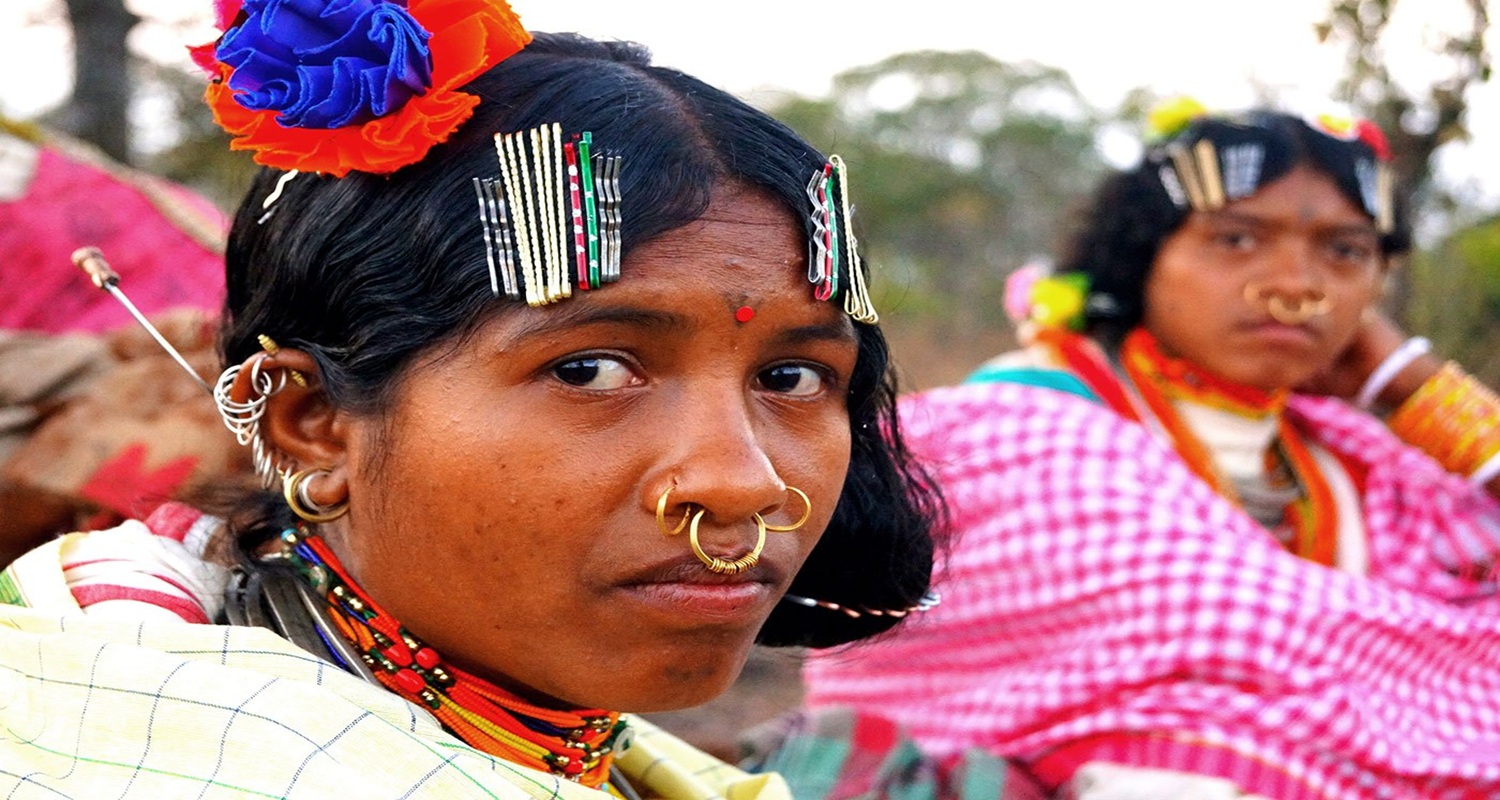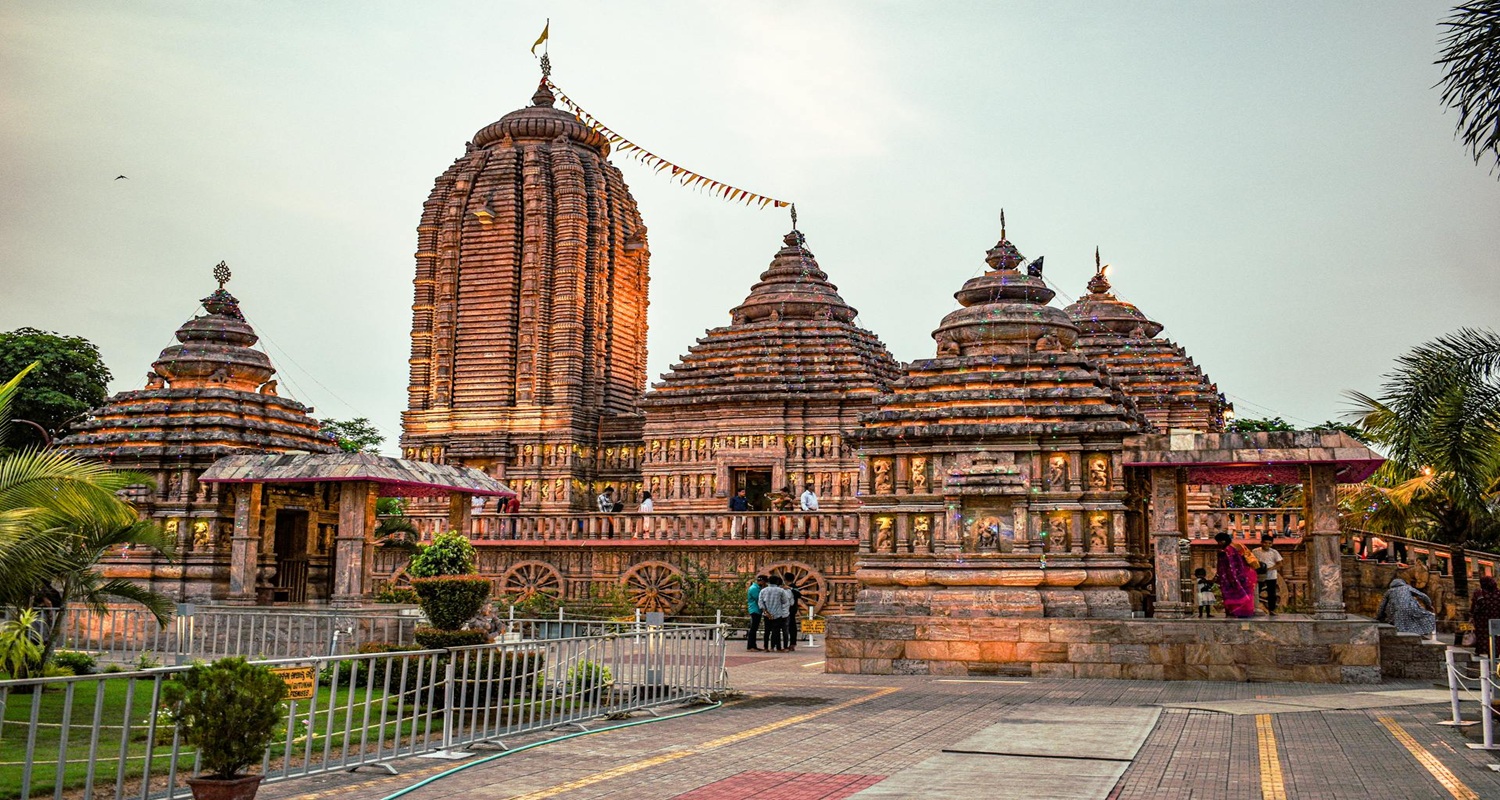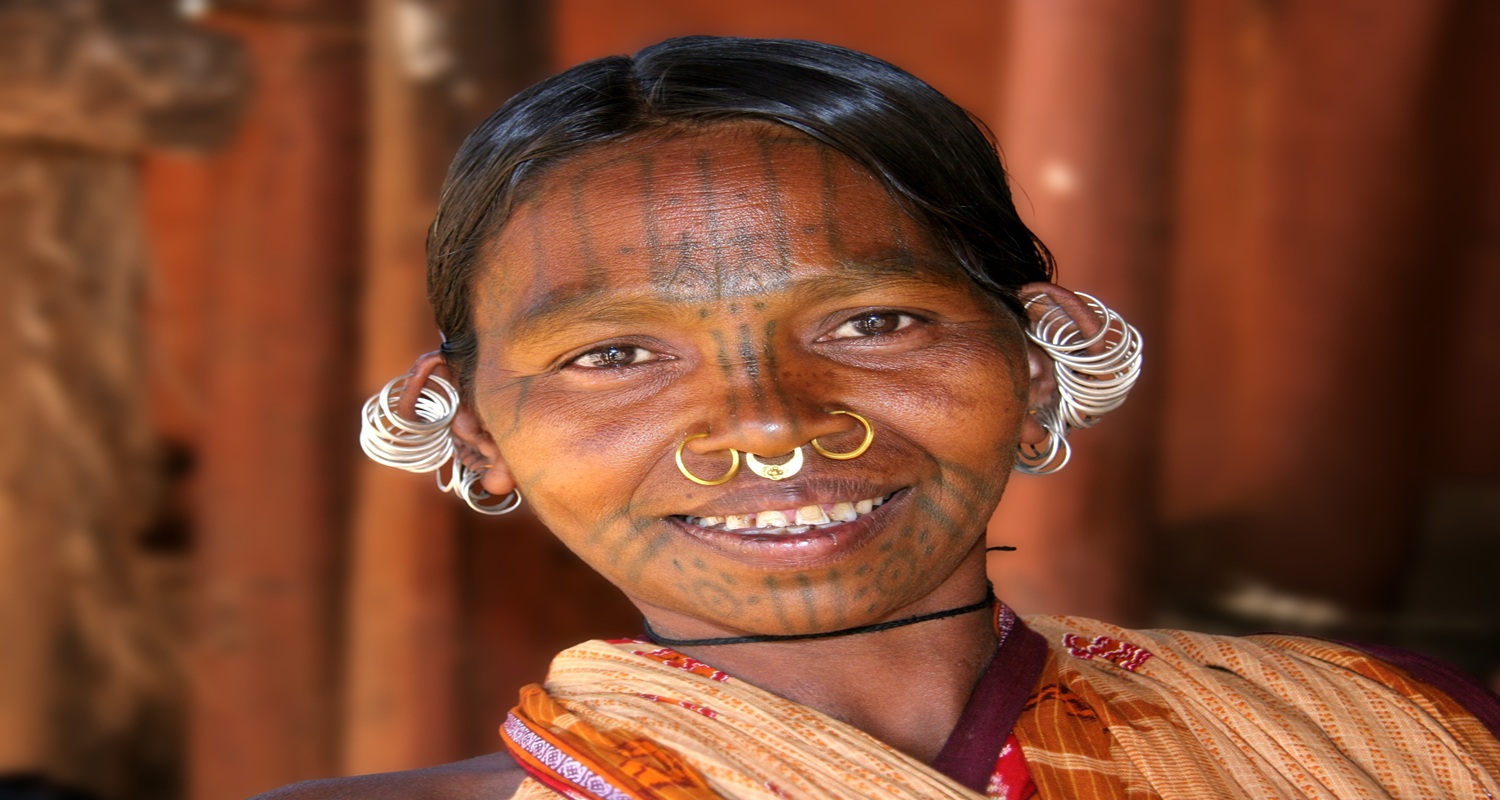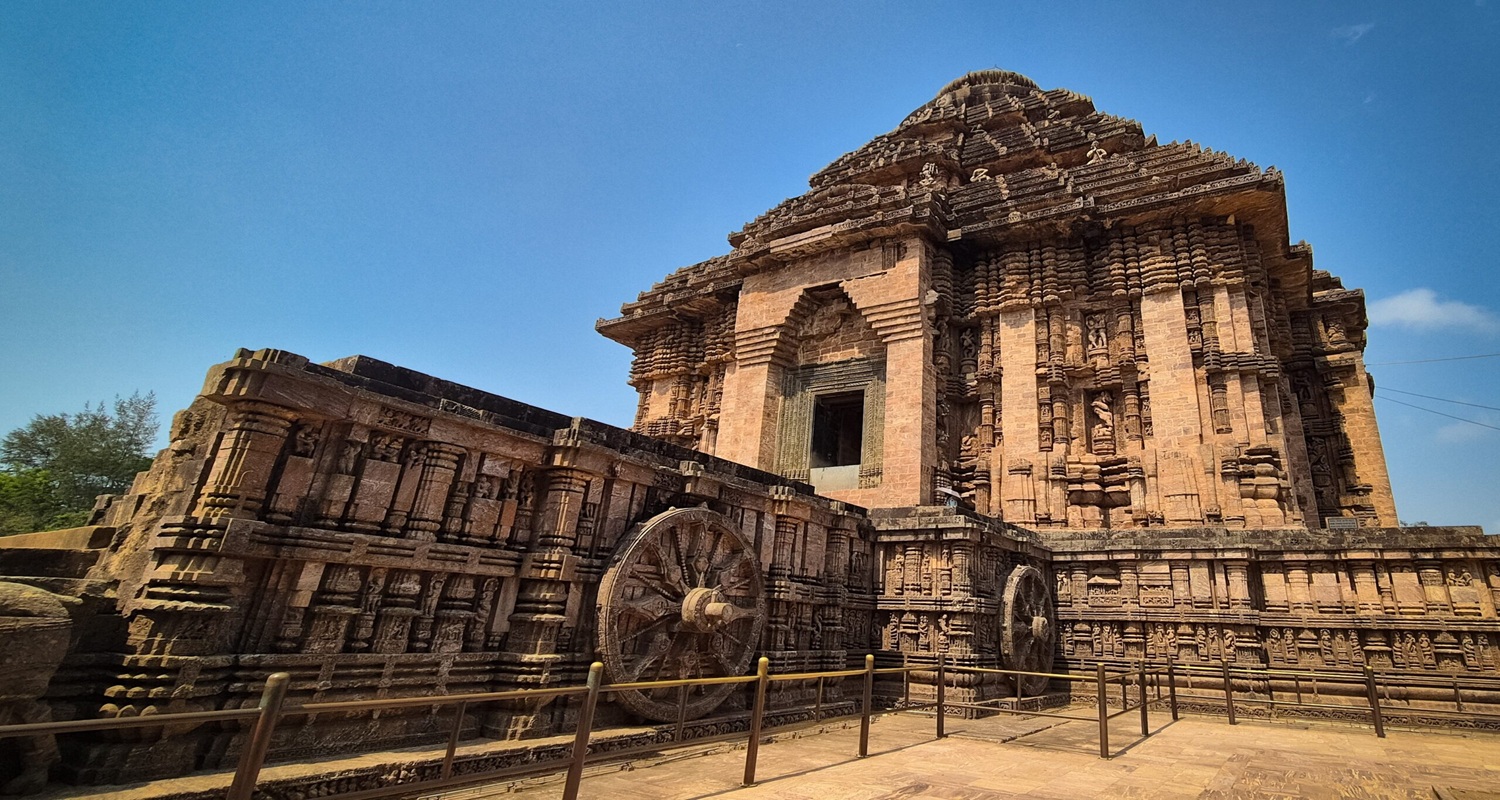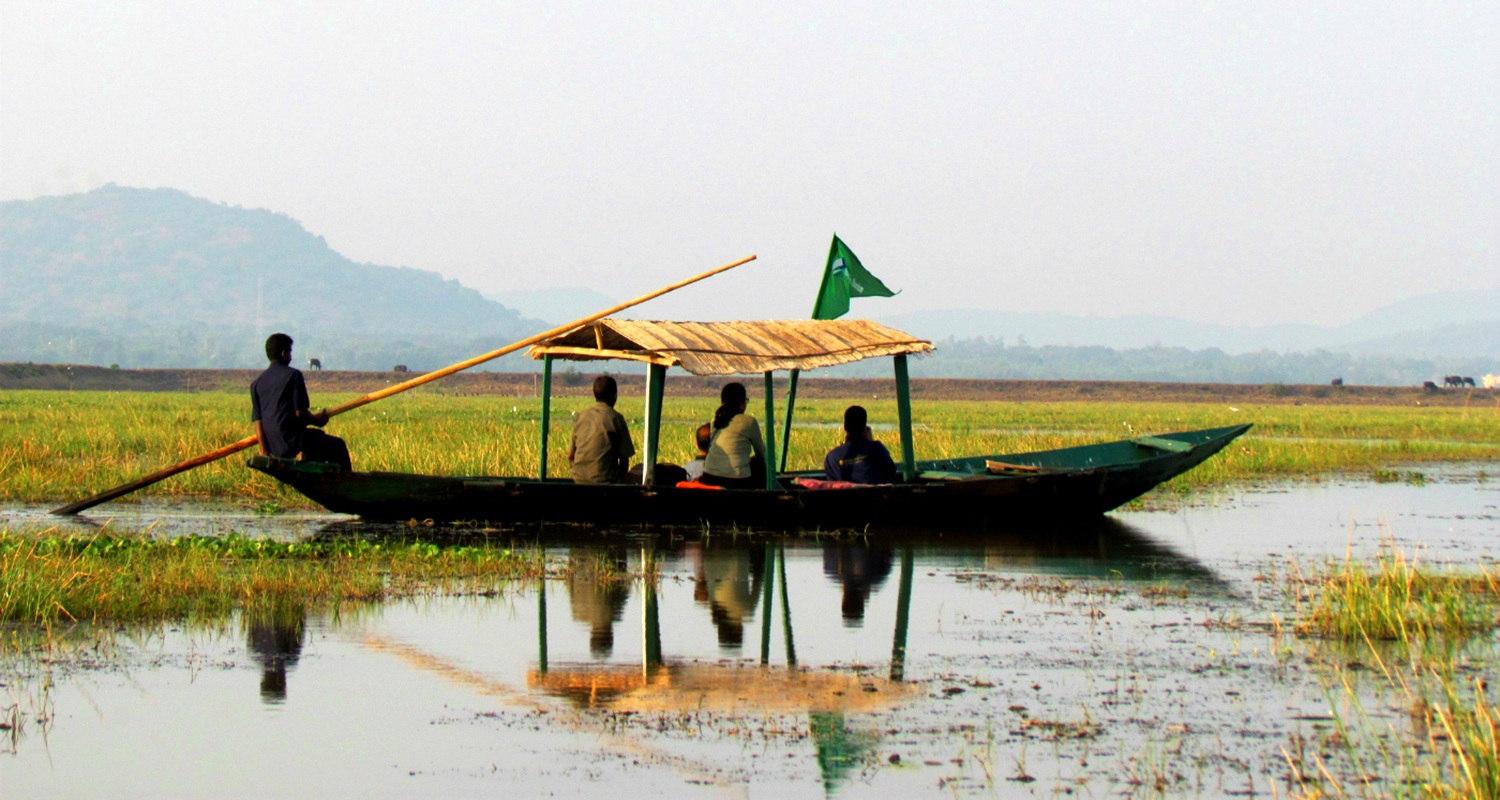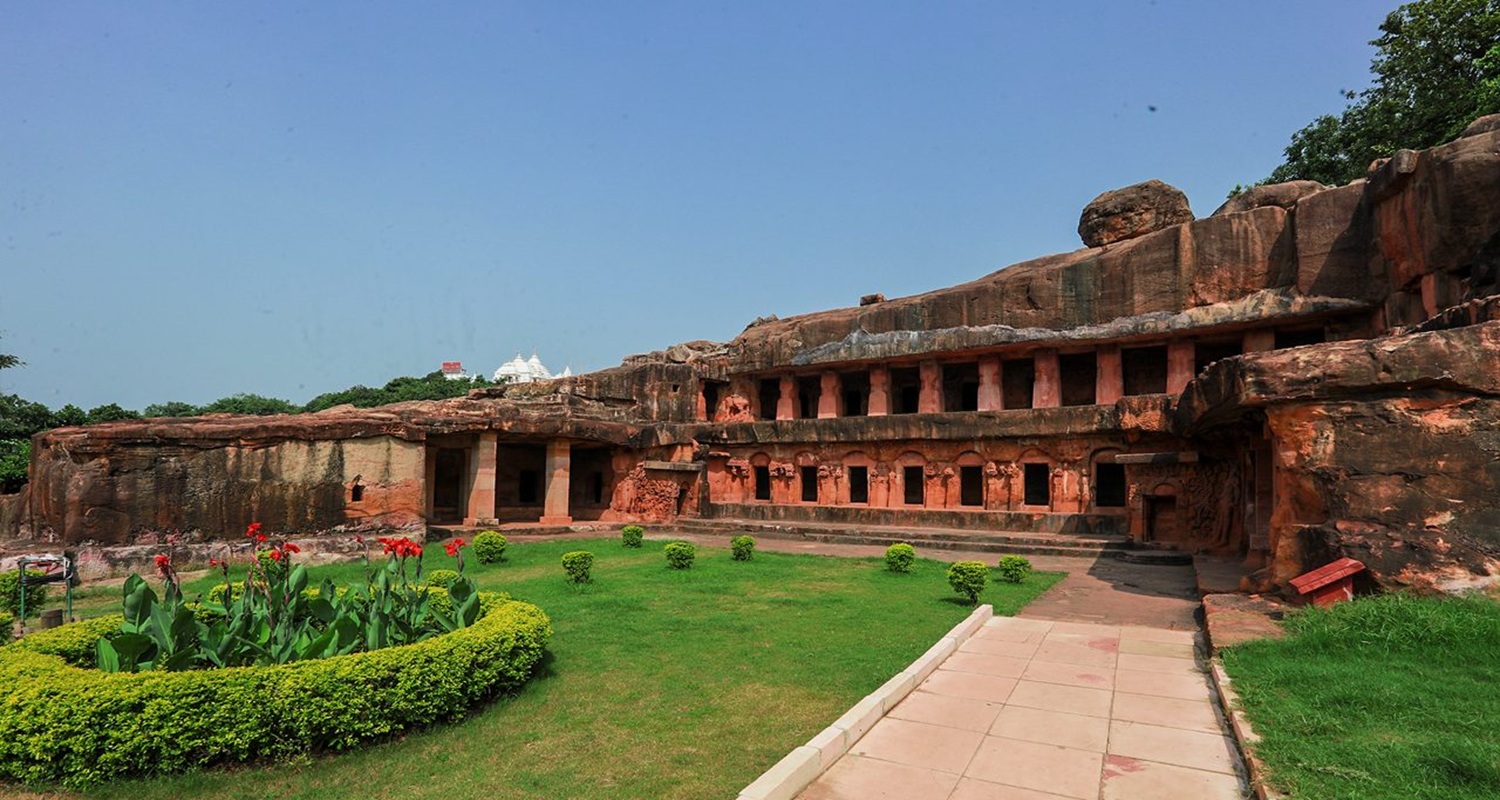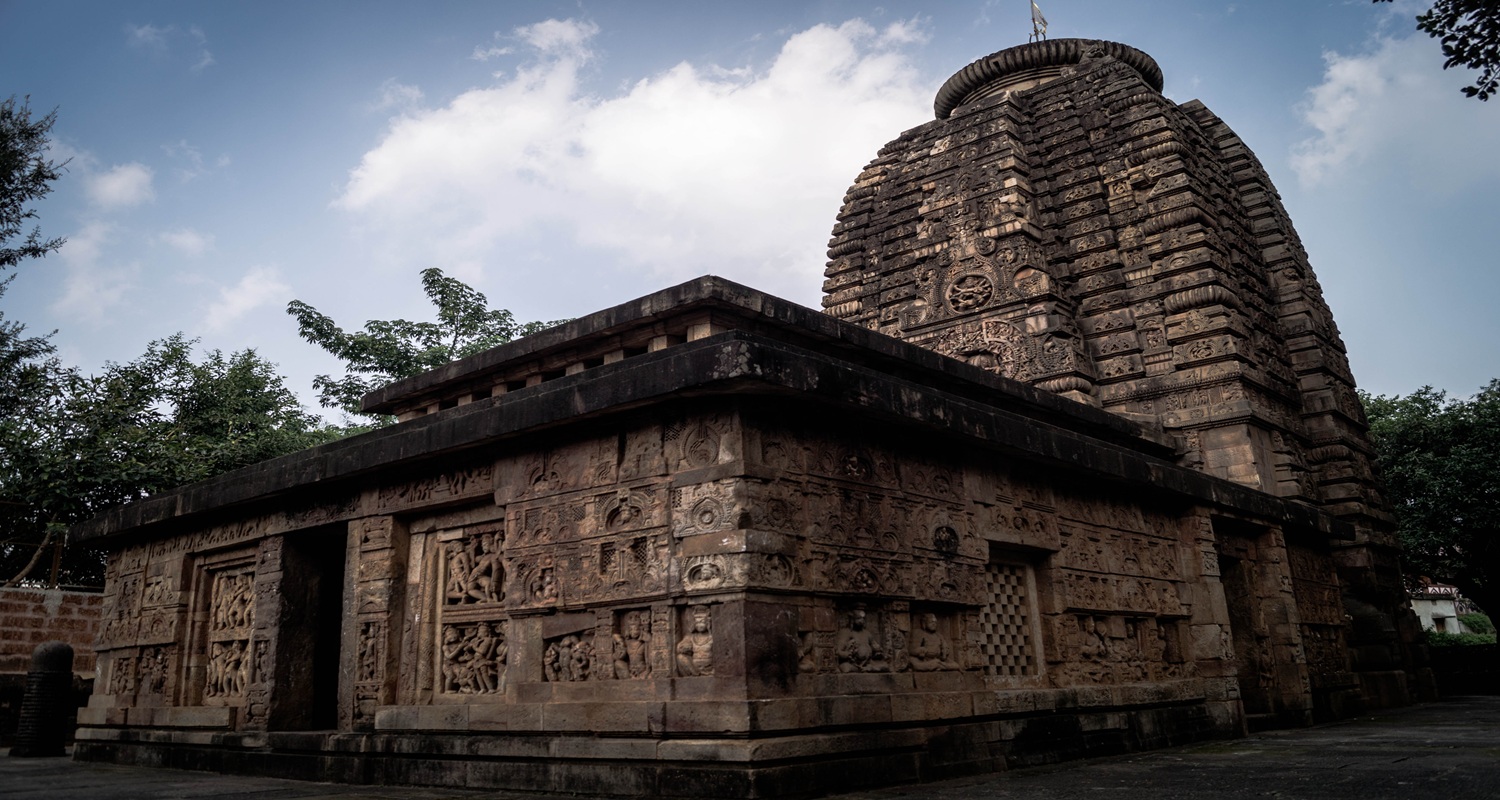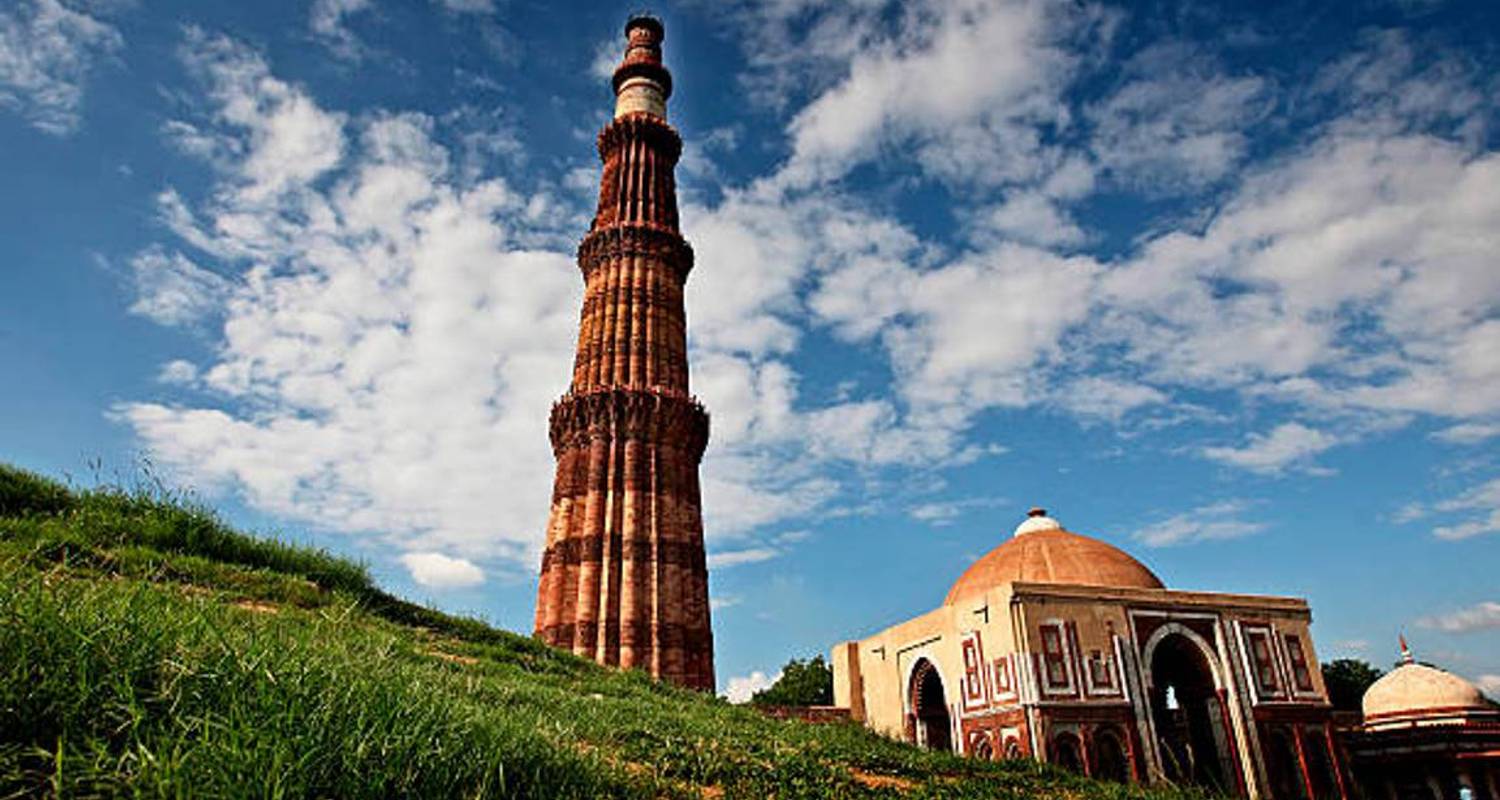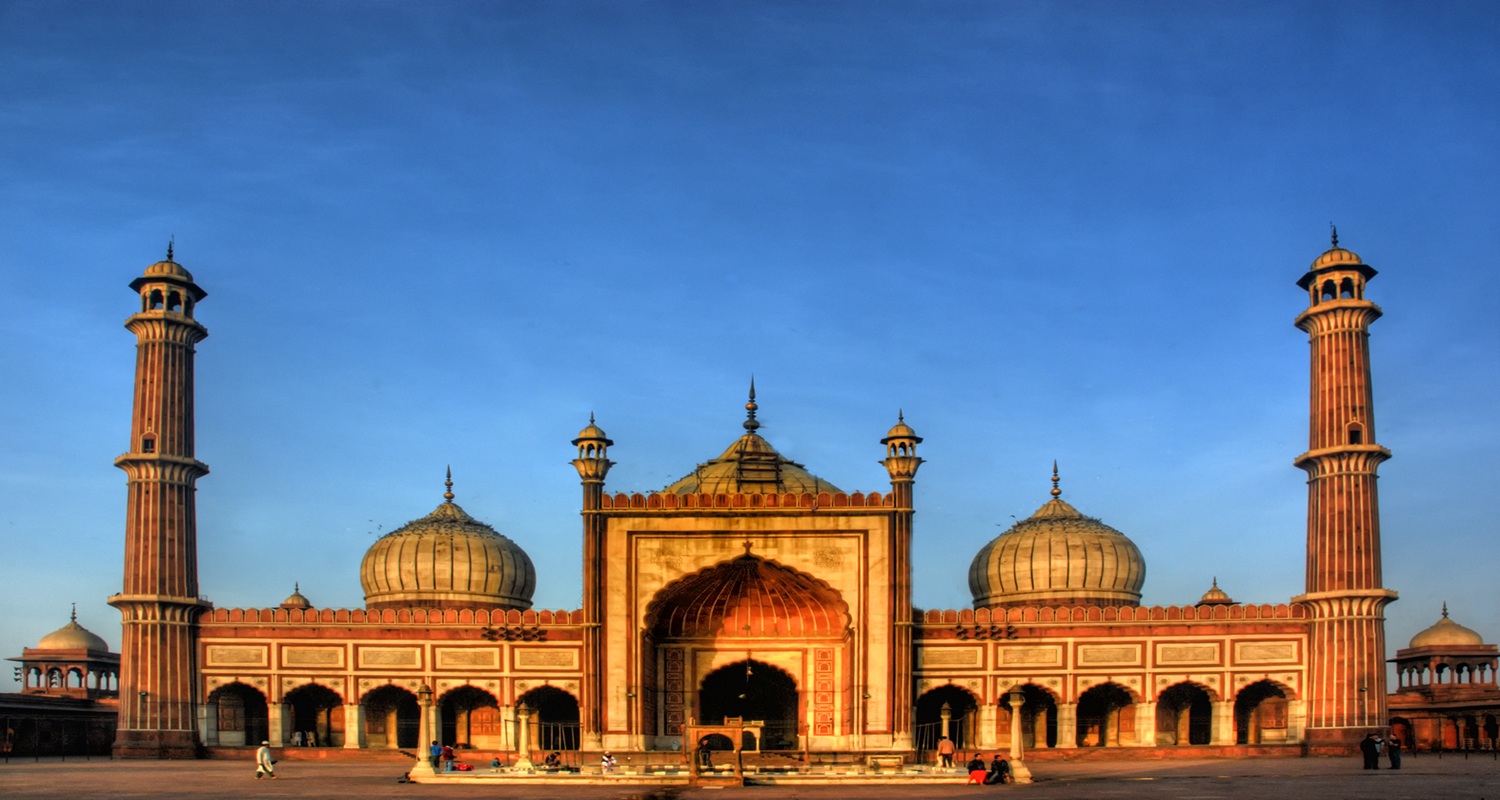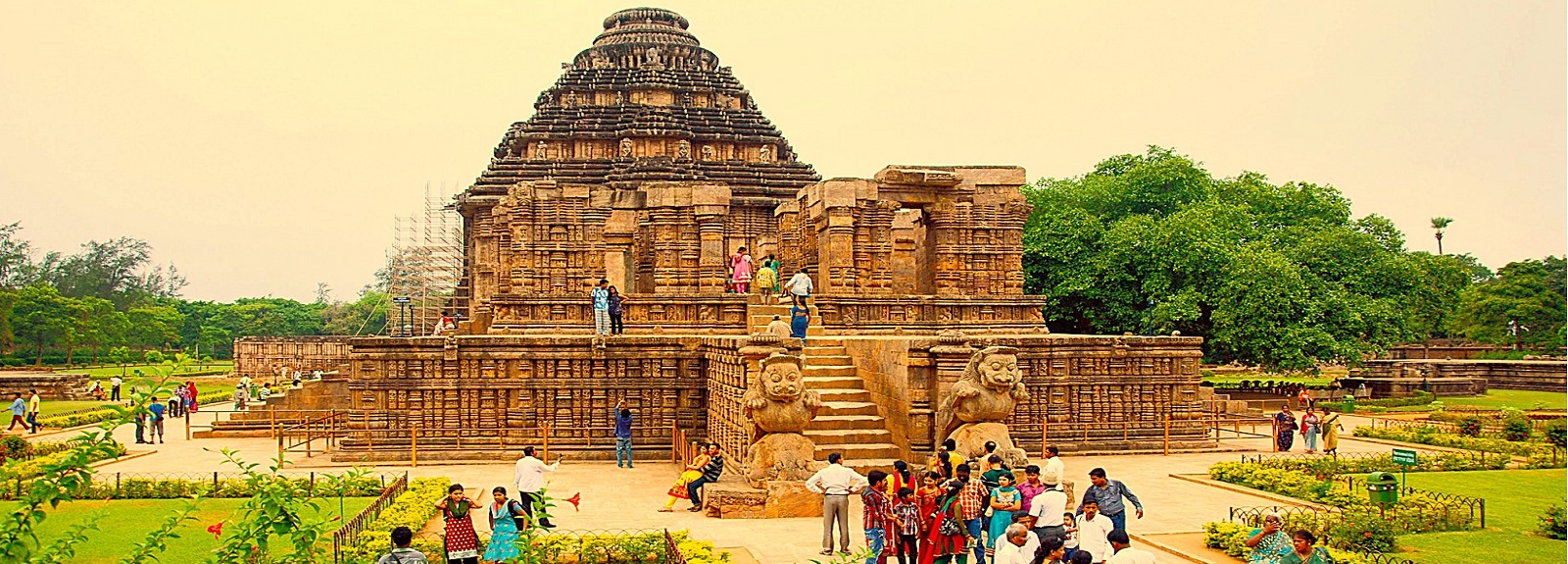
Orissa
Orissa | Tribes & Temples
Included
INR 123700 Per Person
3-4-5 stars
Travel Duration
10 Days / 09 Nights
Included in the trip
Individual departures
Round Year
Odisha, is a state in eastern India known for its rich cultural heritage and ancient temples. Odisha is also home to several tribal communities who have preserved their unique culture and way of life for centuries. The state is dotted with numerous temples that attract tourists from all over the world. The temples in Odisha are known for their exquisite architecture, intricate carvings, and historical significance. The most famous temple in Odisha is the Jagannath Temple in Puri. Another famous temple in Odisha is the Konark Sun Temple. This 13th-century temple is dedicated to the Sun God and is a UNESCO World Heritage Site. Apart from these famous temples, Odisha has several other lesser-known but equally beautiful temples. The Lingaraj Temple in Bhubaneswar, Mukteswara Temple in Puri, and Parasurameswara Temple in Bhubaneswar are some of the must-visit temples in the state. Odisha is also known for its rich tribal culture. The state is home to 62 tribal communities, each with its unique culture, language, and way of life. A tribal tour of Odisha is a fascinating Experience, where you can witness the tribal way of life, their rituals, and their art and craft. One of the most famous tribal tours in Odisha is the Dongria Kondh Tribal Tour. The Dongria Kondh tribe is known for their unique lifestyle, and they are famous for their worship of nature and mountains. The Bonda Tribe is another popular tribe in Odisha. The Bonda tribe is known for their colorful attire, and their women wear elaborate bead necklaces and brass bangles. a visit to Odisha is not complete without visiting its ancient temples and experiencing its rich tribal culture. The state is a treasure trove of cultural heritage and offers a unique experience for tourists who are looking for something different.
Stages Of Tour
Day 1
ARRIVAL IN DELHI & SIGHTSEEING
ARRIVAL IN DELHI & SIGHTSEEING
Wednesday
Welcome to DELHI, The Capital of India. Your flight would land at INDIRA GANDHI INTERNATIONAL AIRPORT. After landing kindly head towards the immigration department and get your passport stamped. Immigration Department would stamp the Visa on your Passport. After the Immigration and Custom check Kindly Take an Exit from the Airport from EXIT GATE NO 4.
MY TOUR ADVISOR’S Representative would be waiting for you to welcome you outside the Gate No 4.
After the Meet Proceed towards the Visit of the CAPITAL of INDIA. You would be Covering following Monuments and activities.
1. VISIT OF OLD DELHI & JAMA MASJID
First you would be taken to the Old Part of the city, also Called as the Old City. It was once built by Emperor Shahjahan and was named Shahjahanabad. You will be visiting the JAMA MASID, the biggest Friday Mosque of India, which can host up to 20,000 Worshippers.
After the visit you can enjoy a Ride on Pedal Rickshaw through the narrow alleys of Famous Chandni Chowk Market which is famous for textiles, street food, spices, and many other items.
2. VISIT OF RAJ GHAT
After the visit of Jama Masjid Proceed Towards the Visit of RAJ GHAT which is the cremation ground of father of the Nation MAHATMA GANDHI.
3. PANORAMIC TOUR OF LUTYENS DELHI
After Paying Homage to the tomb of Mahatma Gandhi, Explore the Lutyens Delhi, Drive through India Gate, Indian Parliament and Government House.
4. VISIT OF QUTUB MINAR.
In the End Proceed towards the visit of Qutub Minar. It was built by First Muslim Ruler Qutbuddin aibak. After conquering the the last Hindu dynasty of Delhi. The Minar is a conical structure with a height of 72 metres. Once it was the most dominating structure of delhi.
After the visit you shall be transferred to your Hotels for check-in. Overnight Stay in DELHI.
Day 2
DELHI - BHUBANESHWAR (Flight - 1.40 Hrs)
Thursday
After Breakfast transfer to airport to catch the flight for Bhubaneshwar. On Arrival meet with MY TOUR ADVISOR’s Representative and transfer to Hotel.
After the check-in visit the city. Starting with Lingraj Temple. ( Non Hindus are not allowed to enter, you can only visit the temple from a platform. Afterwards proceed towards the visit of Purushrameshwar Temple and Mukteshwar Temple. After the visit return to the Hotel for overnight Stay.
1. BHUBANESHWAR
Bhubaneswar, the capital of Odisha, is a city steeped in history and heritage. Known as the "Temple City of India," it was once the ancient capital of the Kalinga kingdom and has served as a significant religious and cultural center for over 2,000 years. The city is home to more than 700 temples, including the magnificent Lingaraj Temple, a masterpiece of Kalinga architecture. Bhubaneswar played a pivotal role in Emperor Ashoka's transformation after the bloody Kalinga War, which led him to embrace Buddhism. Today, Bhubaneswar seamlessly blends its ancient roots with modern development, making it a unique historical and urban destination.
2. LINGRAJ TEMPLE
The Lingaraj Temple, located in Bhubaneswar, Odisha, is a magnificent 11th-century Hindu temple dedicated to Lord Shiva. It is one of the finest examples of Kalinga architecture, built in red sandstone with a towering spire reaching 180 feet. The temple complex houses around 50 smaller shrines and is surrounded by high fortified walls. Unlike many temples, Lingaraj also integrates elements of Shaivism and Vaishnavism. The central deity, Harihara, represents a fusion of Lord Shiva and Lord Vishnu. Non-Hindus are not allowed inside, but can view the temple from a nearby platform. It remains a major pilgrimage site and cultural landmark.
3. PURUSHRAMESHWAR & MUKTESHWAR TEMPLE
Purushrameshwar Temple is a small but historically significant 7th-century temple dedicated to Lord Shiva. It marks an early phase of temple construction in Bhubaneswar. Though modest in size and detail, it reflects the transitional style between rock-cut sanctuaries and fully developed structural temples. Its simple yet elegant design includes a rekha deula (sanctum tower) and features modest carvings. It stands as a precursor to more elaborate temples like Mukteshwar and Lingaraj.
4. MUKTESHWAR TEMPLE
Built around the 10th century, Mukteshwar Temple is considered a gem of Odisha architecture. Though small in scale, it is celebrated for its intricate carvings and ornate torana (arched gateway), a rare feature in Indian temples. Dedicated to Lord Shiva, it represents a mature phase of the Kalinga style, combining grace and technical finesse. Its sculptural details depict scenes from Hindu mythology, daily life, and spiritual symbolism, showing Buddhist and Jain influences as well. Mukteshwar is often called the "jewel of Odisha architecture" and is considered a vital link in the development from early to later temples like Lingaraj.
Day 3
BHUBANESHWAR
Friday
After Breakfast in hotel start the tour of the city of Bhubaneswar. Your first stop is Rajarani Temple, famous for the elegance of its sculptures with a series of nymphs of amazing sensuality. Later proceed to visit the Hindu and Jain caves of Khandagiri and Udaigiri, located about 5 Km from Bhubaneswar. Finish your day with the visit of Tribal Museum which showcases the culture and traditions of the tribes of Orissa. Return to the Hotel for Overnight Stay.
1. RAJARANI TEMPLE
The Rajarani Temple in Bhubaneswar is one of the most exquisite and unique examples of ancient Kalinga architecture. Built in the 11th century, it stands out because it is not dedicated to any specific deity, though scholars believe it was originally a Shaiva temple due to the presence of Saivite sculptures like Nataraja and dancing Shiva. The temple gets its name from the local reddish-golden sandstone called Rajarani, used in its construction. Unlike many other temples, it lacks a presiding idol, which adds to its mystique.
2. UDAIGIRI & KHANDAGIRI CAVES
The Udayagiri and Khandagiri Caves, located on twin hills near Bhubaneswar, Odisha, are ancient rock-cut caves of immense historical and religious significance. Dating back to the 1st century BCE, they were carved during the reign of King Kharavela of the Mahameghavahana dynasty as residential complexes for Jain monks. Udayagiri, meaning "Hill of Sunrise," consists of 18 caves and is known for the famous Hathigumpha Inscription, which records the achievements of King Kharavela. Its most notable cave, Rani Gumpha, features intricately carved pillars, arches, and sculptures. Khandagiri, with 15 caves, is slightly less ornate but offers a more serene atmosphere and panoramic views of the city. These caves showcase early examples of rock-cut architecture in India and reflect the rich Jain heritage of the region. Together, they form a significant archaeological site and are popular among tourists, historians, and devotees alike.
Day 4
BHUBANESHWAR – KONARK – PURI (110 Km | 3 Hours)
Saturday
After breakfast, drive to Puri, making a stop at the magnificent Konark Sun Temple along the way. Konark is renowned for its stunning architecture and is dedicated to the Sun God, making it one of Odisha’s greatest marvels. After the Visit proceed towards Puri.
Puri is one of the four most sacred pilgrimage sites for Hindus, is especially famous for the grand Chariot Festival (Rath Yatra). Upon arrival in Puri, visit the Jagannath Temple complex. While entry to the main temple is restricted to practicing Hindus, foreign visitors can explore the vibrant surroundings filled with pilgrims, local vendors, and stalls selling religious offerings and souvenirs.
1. KONARK SUN TEMPLE
The Konark Sun Temple, is a 13th-century architectural marvel dedicated to Lord Surya, the Sun God. Built by King Narasimhadeva I of the Eastern Ganga dynasty around 1250 CE, the temple is designed in the shape of a colossal chariot with twelve intricately carved stone wheels on each side, drawn by seven horses. It is a masterpiece of Kalinga architecture and symbolizes the passage of time. The temple is renowned for its stunning carvings, including depictions of deities, animals, dancers, and intricate geometric patterns. Though much of the main sanctum has collapsed, the remaining structures, especially the Jagamohana (assembly hall), display unmatched craftsmanship. The temple was once aligned so that the first rays of the rising sun would strike the deity. Recognized as a UNESCO World Heritage Site, the Konark Sun Temple stands as a testament to India’s ancient engineering, artistic excellence, and spiritual devotion.
2. JAGANNATH PURI TEMPLE
The Jagannath Temple, is one of the most sacred Hindu temples and a vital part of the Char Dham pilgrimage. Dedicated to Lord Jagannath (a form of Lord Vishnu/Krishna), along with his siblings Balabhadra and Subhadra, the temple was built in the 12th century by King Anantavarman Chodaganga Deva of the Eastern Ganga dynasty. The temple is renowned for its towering spire, ancient rituals, and the grand Rath Yatra (Chariot Festival), during which the deities are paraded in massive chariots through the streets. Unlike traditional idols, the deities are made of wood and are ritually replaced every 12–19 years in a secretive ceremony called Nabakalebara. The temple's kitchen is considered the largest in the world, feeding thousands daily. Non-Hindus are not allowed inside, but they can view the temple from a nearby platform. The Jagannath Temple is a living center of devotion, tradition, and cultural heritage.
Day 5
PURI - MANGALAJODI– GOPALPUR (180 KM, 4 HRS APPROX.)
SUNDAY
After breakfast, proceed to Gopalpur with an en route stop at the charming fishing village of Mangalajodi, nestled on the banks of Chilika Lake — a paradise for bird watchers. This region offers one of India’s most captivating landscapes, blending land, sea, lagoons, canals, and lakes into a breathtaking natural mosaic. Enjoy a serene boat ride on Chilika Lake, where you can spot a diverse array of bird species in their natural habitat. After exploring the lake, continue your journey to Gopalpur. Upon arrival, check in at your hotel and later, relax as you take in the stunning sunset by the beach.
1. MANGALAJODI
Mangalajodi is a tranquil village located on the northern fringes of Chilika Lake in Odisha, and is celebrated as one of India’s finest birdwatching destinations. Once known for rampant bird poaching, the village has undergone a remarkable transformation into a model for community-led conservation and ecotourism. Every year, particularly between November and February, Mangalajodi becomes a haven for over 150 species of migratory birds arriving from distant regions like Siberia, Central Asia, and Northern Europe. The wetlands here provide ideal nesting and feeding grounds, attracting birds such as herons, egrets, godwits, pintails, and storks. Visitors can explore this vibrant ecosystem through silent, locally guided boat rides, offering an intimate view of the birdlife without disturbing the environment. The initiative has not only preserved a vital natural habitat but also provided sustainable livelihoods for former poachers, now turned conservationists.
Day 6
GOPALPUR - BALIGUDA (250 KM, 6 HRS APPROX)
MONDAY
After breakfast, depart for Baliguda, marking the beginning of your journey into the tribal heartland of Odisha. This region is home to the Malliah Kondh tribe, known for their unique cultural traditions. Upon arrival, check in to your hotel. In the afternoon, set out on an excursion to nearby Malliah Kondh villages, where you’ll encounter tribal communities renowned for their striking facial tattoos, traditionally worn by women. These distinctive markings are symbolic, often representing the snout of a tiger, and are deeply rooted in their spiritual beliefs and identity. Overnight in Balliguda.
1. MALLIAH KONDH
The Malliah Kondh (also spelled Mali or Maliah Kondh) are a sub-group of the larger Kondh tribal community, primarily inhabiting the Kandhamal district and surrounding regions in Odisha. They are known for their distinct cultural identity, especially the tattooed faces of their women, with patterns often symbolizing the snout of a tiger, believed to offer spiritual protection and express tribal pride. Traditionally, the Malliah Kondhs are agrarian, practicing shifting cultivation and depending on the forest for sustenance. They live in compact village clusters and follow a lifestyle deeply rooted in nature and ancestral traditions. Their religion is animistic, involving the worship of natural elements like hills, rivers, and trees, along with a pantheon of tribal deities. Social life is vibrant, with communal dances, music, and seasonal festivals playing a key role in cultural expression. Though modern influences are gradually reaching their communities, the Malliah Kondh continue to preserve their indigenous customs and identity.
Day 7
BALIGUDA - BISAMKATAK– RAYAGADA (160 KM, 4 HRS APPROX.)
TUESDAY
After breakfast, visit more nearby villages of the Malliah Kondh tribe to further explore their unique traditions and way of life. Later, continue your journey to Bissamcuttack, where you'll visit villages inhabited by the Desia Kondh tribe. Historically known for practicing human sacrifices as part of their ancient rituals, the community has long since abandoned this practice, which has now been replaced by animal sacrifices performed only during special religious occasions. After the visit, proceed to Rayagada. Upon arrival, check in at your Hotel. overnight stay in Raygada.
1. DESIA KONDH TRIBE
The Desia Kondh tribe is one of the prominent tribal groups of Odisha, mainly found in the hilly and forested regions of Koraput, Rayagada, and Kandhamal districts. They are a sub-group of the larger Kondh (or Kandha) tribal community and are known for their deep-rooted connection to nature and ancestral traditions. Traditionally, the Desia Kondhs practice shifting cultivation (podu farming) and depend on forests for their livelihood, collecting forest produce and practicing subsistence agriculture. Their spiritual beliefs are animistic, and they worship natural elements such as mountains, trees, and rivers, considering them as living deities.
The community is recognized for its colorful dress, distinctive jewelry, and elaborate festivals, which often involve traditional music and energetic dance forms performed during important social and agricultural events. The Desia Kondhs live in closely-knit villages governed by a village council, with strong emphasis on communal harmony and oral traditions passed down through generations. Despite facing pressures of modernization and social change, they continue to uphold their unique cultural identity and indigenous lifestyle, offering visitors a glimpse into a way of life that is both ancient and resilient.
Day 8
RAYAGADA – CHATTIKONA - SEMILIGUDA (THE WEEKLY MARKET OF CHATTI KONA - 110 KM, 3 HRS APPROX.)
WEDNESDAY
After breakfast, begin your drive toward Chattikona, a journey that takes you through picturesque landscapes and scenic countryside. By afternoon, arrive at the weekly tribal market of Chattikona, held exclusively on Wednesdays, where you’ll have the opportunity to observe and interact with members of the Dongariya Kondh tribe, known for their distinctive attire and customs. After exploring the vibrant market and soaking in the cultural atmosphere, continue your journey to Semiliguda, a bustling commercial hub in the Koraput district. On arrival in Semiliguda, check in. Overnight in Semiliguda.
1. DONGARIYA KONDH TRIBE
The Dongariya Kondh tribe is one of the most distinct and ancient tribal communities of Odisha, primarily residing in the Niyamgiri Hills spread across the Rayagada and Kalahandi districts. They are classified as a Particularly Vulnerable Tribal Group (PVTG) due to their isolated lifestyle, low literacy levels, and dependence on natural resources. The Dongariya Kondhs are known for their deep spiritual connection with nature, especially the Niyam Raja, the deity of the sacred hills they inhabit, which they worship as a living god.
Traditionally, they practice shifting cultivation on the hill slopes, growing millet, pulses, and seasonal vegetables. Their lifestyle is largely self-sustained, and they live in small hamlets nestled in the forests. Dongariya Kondh men and women wear colorful attire and elaborate jewelry, and the women are particularly recognized for wearing nose rings and tattoos. The tribe came into national focus during their resistance to bauxite mining in Niyamgiri, which highlighted their role as guardians of ecological and cultural heritage. Despite gradual exposure to modernization, they strive to preserve their age-old traditions, language, and sacred relationship with their land.
Day 9
SEMILIGUDA EXCURSION TO ONUKUDELLI WEEKLY MARKET (70 KM, 2 HRS APPROX.)
THURSDAY
Spend the entire day on an excursion to the vibrant weekly tribal market of Onukudelli, a rare opportunity to observe and interact with the indigenous Bonda and Gadaba communities in their traditional attire. The Bonda tribe, often referred to as the "Pygmies of Odisha," are believed to be of Tibeto-Burmese origin and are considered one of the most ancient and fiercely independent tribal groups in India. They have managed to preserve their distinct customs, language, and way of life over centuries. Alongside them, the Gadaba tribe, among the oldest in Odisha, are also known for their rich cultural heritage and colorful dress. The market offers a fascinating glimpse into the social and cultural practices of these remote communities. After an enriching day of cultural immersion, return to Semiliguda for overnight stay.
1. BONDA TRIBE
The Bonda tribe, also known as Remo, is one of the most ancient and primitive tribal communities in India, primarily inhabiting the remote hilly regions of Malkangiri district in southern Odisha. Believed to be of Austroasiatic or Tibeto-Burmese origin, the Bondas have retained a unique identity through their distinct language, customs, and attire. Bonda women are especially known for their striking appearance—shaved heads adorned with beads, heavy silver jewelry, and short, colorful clothing made of woven cloth called ringa. The Bondas traditionally practice shifting cultivation and live in isolated, self-sufficient hamlets in the hills. They are known for their fierce independence, deeply rooted traditions, and strong connection to nature. While modern influences are gradually reaching their communities, the Bondas remain protective of their culture. Their weekly visits to markets like Onukudelli offer rare glimpses into their traditional lifestyle, making them a subject of fascination for anthropologists and culturally-curious travelers alike.
Day 10
SEMILIGUDA – KUNDULI MARKET– VIZAG (220 KM, 5 HRS APPROX.)
FRIDAY
After breakfast at the hotel, begin your drive to Vizag, with an en route stop at the vibrant Kunduli tribal market - A major gathering place for various ethnic communities and one of the most significant tribal markets in Odisha. After exploring the market, continue your journey to Vizag. On arrival, proceed to the airport to board your flight to Delhi. Upon reaching Delhi, you will be transferred to the International Airport for your onward journey.
1. KUNDULI MARKET
The Kunduli Tribal Market, located near Koraput in southern Odisha, is one of the largest and most vibrant tribal markets in the region. Held weekly, typically on Thursdays, this market serves as a major hub where numerous tribal communities—including the Paroja, Kondh, Gadaba, Bonda, and Desia Kondh—gather to trade goods, socialize, and maintain cultural ties. It is especially popular for its colorful atmosphere, with tribal men and women dressed in traditional attire, adorned with distinctive jewelry and accessories.
At Kunduli, locals barter and sell a wide range of items such as grains, vegetables, forest produce, handmade crafts, tools, and livestock. For visitors, it offers an authentic and immersive glimpse into tribal life and the region’s socio-economic fabric. Beyond commerce, the market is a cultural melting pot, where one can witness indigenous customs, languages, and community interactions in their raw, unfiltered form. It remains a key attraction for anthropologists, photographers, and culturally curious travelers.
End Of The Services
The hotels
My Tour Advisor Provides a wide variety of hotels
Cost Per Person For Different Categories
| # | No of Pax | Standard | Superior | Prestige |
|---|---|---|---|---|
| 1 | 2 Pax | INR 112400 | INR 131600 | INR 153900 |
| 2 | 4 Pax | INR 101000 | INR 118400 | INR 138500 |
| 3 | 6 Pax | INR 95600 | INR 111800 | INR 130800 |
| 4 | 8 Pax | INR 89900 | INR 105000 | INR 123000 |
| 5 | 10 Pax | INR 84000 | INR 98700 | INR 115000 |
Supplements
| # | Plan | Standard | Superior | Prestige |
|---|---|---|---|---|
| 1 | Single Supplement | INR67000 | INR 78900 | INR 92300 |
| 2 | FUll Board | INR 3600 | INR 7200 | INR 10800 |
| 3 | Christams Supplement | INR 28000 | INR 32000 | INR 38000 |
| # | Months | Dates 1 | Dates 2 |
|---|
Inclusions
- Flights from Delhi to Bhubaneshwar and from Visakhapatnam to Delhi in economy class, 15 kg luggage allowance.
- Accommodation on twin sharing basis in the selected category hotels as per the itinerary.
- Half board meal plan (Breakfast & Dinners).
- Transfers and sightseeing as per the itinerary by vehicle with AC on private basis.
- Local English-Speaking guides as per the sightseeing.
- Entrance fee to monuments and the activities as mentioned in the itinerary.
- Local permits to enter tribal areas.
- Two bottles of water per person per day.
- Local taxes, parking, tolls and driver expenses.
- Travel Kit (travel documents, mask, hand sanitizer).
- All Taxes & GST
Exclusions
- International flights.
- Visas & Travel insurance
- Tips and personal expenses
- Anything not mentioned in the Program.
TOUR HIGHLIGHTS
- In accordance to the COVID 19 pandemic all our tours are operated with all precautionary measures including SANITIZED CARS AND HOTELS/COMPLIMENTARY SANITIZERS/MASKS (Your safety is our priority)
- All Inclusive Tour. – Hotels / Transport / Guides / Monument Fees.
- Konark Sun Temple
- Jagannath Temple
- Beaches of Puri and Gopalpura
- Bonda trbal Market Visits
- Kondh Tribal Market
Enquiry Form
Please fill the below form for more information
PASSPORT
A valid passport is required for at least six months before Boarding the Flight. We encourage you to check the validity of the passport and we advise you to bring a photocopy of your passport and the page of the visa obtained, or carry multiple copies of ETA, useful in case of loss.
INDIAN CONSULAR VISA
To enter India, an entry visa issued by the Indian Embassy is required. It is categorically necessary that all travellers, whose itinerary includes leaving and returning to the country, have obtained a double or multiple visas. During the flight to India you will be given a disembarkation form to be filled in with your data and to be delivered to passport control. The detachable part completed with the customs declaration will be returned to you, and must then be handed over to the customs upon leaving the airport.
INTERNAL FLIGHTS
Air tickets for flights within India or between India and Nepal, if not included in the intercontinental flight, will be collected by your companion or our representative and will be delivered to you upon arrival. Flights within India and between Nepal are the trickiest part of the journey. We recommend a lot of patience, because it is not uncommon for flights to suffer delays, cancellations or make intermediate stops not foreseen at the time of booking. It is therefore essential to always go to the airport on time (about 2 hours before the flight). In the event of cancellations, however, the companies, according to the new regulations, will refund the cost of the ticket but have no obligation to re-route. The rebooking will then be done by our local office by purchasing a new ticket. Purchasing it on the same day, the same fare as the canceled flight is not always available. In case this exceeds that of the cancelled flight, the difference must be paid directly on the spot. If there are no other flights on the scheduled route, a land transfer by car/bus will be provided in lieu of the ticket.
DOMESTIC FLIGHTS BAGGAGE ALLOWANCE
Since recently (August 2013) both on intercontinental flights and on internal flights, the companies are very strict in calculating the weight of the baggage and each additional kilogram is subjected to an extra payment according to the rules of the company itself. In this regard, we report the scheme concerning the baggage allowance for the economy class granted by each airline for flights within India and between India and Nepal:
Airline
Hand Baggage Weight
Checkin Luggage Weight
Air India
7 kg + Laptop
15 kg
Jet Airways
7 kg + Laptop
15 kg
Indigo & Spice Jet
7 kg + Laptop
15 kg
Go Air
7 kg + Laptop
15 kg
Jet Lite
7 kg + Laptop
15 kg
The company has the right to apply an extra cost for each kilogram exceeding the above, (indicatively from 4 to 8-euro per kg).
LOCAL GUIDES AND ESCORT TOURS
For the entire duration of the group tour, starting from your arrival in India, you will be assisted by a Tour Escort or local Guide (for individual tourists) in each city who will take care of every technical-organizational detail. The tour escort will also act as a local guide in the cities for which he is licensed. In the others he will be accompanied by a local foreign speaking guide or English-speaking guide as per the provisions of the Indian government. In the latter case, he will provide for the translation.
In many cities of India, in fact, there are no local guides speaking foreign languages (especially in southern India, central India and some parts of Rajasthan), or there are few.
THEFT
We remind you that passport, telephone and valuable accessories in general must always be kept by the passenger and never left unattended, as no service facility takes charge of any loss/theft during the tour. It is also good to have all the emergency bank numbers with you in case of need.
TIPS
In India, tipping is a custom rooted in local custom. The amount of tips is at the discretion of the passengers, but as a rule they are in the local custom. In restaurants it is customary to leave 10% of the bill as a tip.
A basic tip:
For half day drive with driver Rs. 300/ full day Rs. 500.
For porters Rs. 70 per bag
For Half Day Local Guide Rs. 500/ Full Day Rs. 800
Per Day Escorts Rs. 1000
(The amount is in total and refers to a group of 2/3 people, it can be increased if you are traveling in a group with more people)
For groups, even small in number but with tour escorts, it is advisable to give the guide a sum at the beginning of the tour (approximately 40/45 euros for 7/9 day tours) and he will distribute them appropriately, thus avoiding boring and continuous collections.
N.B. (This figure does not include a possible tip for the companion)
ROOM AVAILABILITY
The rooms are available until 12.00 on the day of departure. In India there is no day use system, therefore if the rooms want to be kept until departure they will have to be paid for the entire following night.
CHECK-IN ONLINE
We inform you that the check-in procedure can take place via online check-in, which can be implemented from the airlines' websites or via the automatic check-in devices specifically installed at the airport.
CLIMATE
The most pleasant season runs from mid-November to March, with moderate heat and low rainfall. The maximum temperatures vary from 27° to 30°, the minimums from 16° to 22°. In March the temperatures begin to rise with highs reaching 38°. The month of August records the peak of the monsoon season (from June to October) which invests the south-western regions with rainfall that varies in intensity according to the areas, limited in some to severe thunderstorms. In October and in the first half of November the south-eastern part of India is affected by a north-east monsoon.
CLOTHING
Clothing must take into account the period and the regions where you go. In southern India, light clothing can be worn all year round, without forgetting long trousers and long-sleeved shirts to protect against insects. During visits to the temples, excessively small clothing should be avoided. For those traveling to the northern regions, warmer clothing is needed, as the temperature can approach freezing in winter. In the desert region of Rajasthan the temperature varies a lot between day and night.
SHOPPING
In India the variety of handicraft production is practically infinite. Indian muslins, canvases, silks and brocades have enjoyed worldwide fame since ancient times and have been appreciated for the quality of the fabric, the beauty and resistance of the colors, the originality of the designs. Even today the brightly colored silk saris, embroidered or woven with gold or silver threads, the brocades of Varanasi as well as the cottons of Rajasthan, the wool or wool and silk carpets of Kashmir and Uttar Pradesh are renowned. The manufacture of fabrics is just one aspect of the varied and rich Indian craftsmanship which ranges from wood carving (teak, sandalwood, rosewood, ebony) spread almost everywhere, especially in Karnataka, to Agra marble inlays or the stone sculptures of Orissa, from ceramics to hand-painted lacquers, from brass and copper pottery to bamboo and leather objects. The skill of the Indians in the cutting and processing of semi-precious and precious stones has been known since ancient times. Haggling in the bazaars is common practice.
Do not buy souvenirs that cost animals their lives or harm nature.
FOOD AND DRINK
It is recommended to drink only bottled or boiled water (found in almost all restaurants and hotels). Carefully avoid tap water and ice in drinks. It is advisable to consume only well-cooked foods and packaged foods, avoiding raw vegetables and fruit that cannot be peeled.
MEDICAL ASSISTANCE
In India there is a great variety of doctors practicing the most diverse forms of therapy and the only hospital in Europe is located in Delhi. It is advisable to bring from Italy tablets against any gastrointestinal disorders and medicines that are difficult to find locally.
BEHAVIOUR
Before entering the temples, mosques and or gurdwaras it is essential to take off your shoes, generally it is allowed to keep your socks on. To avoid discomfort, do not bring leather articles of any kind with you, because they could arouse some opposition. Inside places of worship, tourists can move as they please and sometimes attend religious rites, for which it is preferable to wear modest clothes, avoiding tops, skirts and shorts. A small donation will be welcome.
The folded hands namaste is the typical Indian greeting and its use will be greatly appreciated. Especially in cities, men will gladly shake hands with tourists; in fact, this gesture is considered particularly cordial. The majority of Indian women, on the other hand, are reluctant to shake hands with a man, both Indian and foreign (a possible refusal should not be considered an offense) and are generally surprised by the informality of relations between the two sexes used in western countries. In private homes you will be welcomed as guests of honor and your lack of familiarity with local customs and traditions will be understood and accepted. If you should be tempted to eat with your fingers, remember to use onlyyour right hand.
GASTRONOMY
Indian cuisine varies according to the regions, with notable differences between the southern and northern regions, but has as a common feature the wise use of spices which are used not only to flavor foods but also to aid digestion. In the north it looks remarkably like that of Middle Eastern or Central Asian countries; there is great use of chili (hot pepper), the staple food is wheat, and various types of unleavened bread are consumed, such as pooris or chappatis. The meats are quite common, naturally not beef. In the south, where the Muslim influence has been less strong, vegetarian diets prevail, and the cuisine revolves around rice, consumed in an infinite variety of ways. The highly savory taste of Indian foods is related to the blend of spices frequently used in food preparation. These mixtures (kari) can accompany various vegetables, chicken or lamb meat, fish or rice. Rogan josh (lamb curry), gishtaba (spiced meatballs with yoghurt), korna (vegetable meat-based stews) are very common in the north. In the south, various vegetable dishes are widespread, including bhujia (a vegetable curry) and along the coasts, fish dishes, the Cochin prawns are delicious. Perhaps the most common dishes throughout India are, however, the simple dhal, essentially a lentil soup, and the thali, the typical vegetarian dish, usually served on a tray with small bowls full of vegetables accompanied by large -of quantity of rice. Among the desserts, kulfi, the typical pistachio ice cream, is very common, while tropical fruit is very abundant. It is a frequent habit to conclude the meal by chewing pal, a mixture of spices, betel nuts and other powders, all wrapped up in an edible leaf. Tea is the most popular drink and some varieties of Indian tea are famous all over the world. Try the rice beer.
LANGUAGE
In India a large number of local languages are spoken, very different from region to region, among which Hindi is the official one. English represents a strong instrument of national cohesion and is very widespread, especially in hotels or in places frequented by Westerners.
RELIGION
Religion forms an integral part of India's complex tradition. Four of the most important faiths in the world meet on this territory: Hinduism, Buddhism, Christianity and Islam and among these the first two were born in India. furthermore, this country which welcomed the Jews and the Parsees (followers of Zoroaster), who then integrated into Indian life, gave rise to Jainism, Sikhism and other innumerable cults and regional sects of lesser importance and which for centuries have acted and interacted with each other.
AIRPORT FEES
They usually already include exit taxes from the country. However, we recommend checking at the airport, as these are subject to change regulations.
PHONE
The cellular network is active in the country, however Italian cell phones are only active in the main cities and it is therefore advisable to purchase a card locally. To call from India the area code is 0039. To call India dial 0091.
VACCINATIONS
No mandatory vaccination is required for travelers from Italy. Before travelling, it is advisable to consult the competent ASL on the need to carry out vaccinations or appropriate prophylaxis. In general, subject to medical opinion, vaccinations against: diphtheria, hepatitis A and B, typhoid, tuberculosis, polio and tetanus booster are recommended. However, we recommend checking the Viaggiare Sicuri website at the link http://www.viaggiaresicuri.it/index.php?india
CURRENCY
The legal tender in India is the Indian Rupee. It is advisable to have currency in US dollars especially for entrances, Euros are also welcome. No Indian currency can be brought into the country or exported, while any amount of foreign currency can be imported. It is very complicated to exchange the Rupee in another currency, so it is advisable to buy in such quantities as to no longer have liquids in local currency at the time of departure. Credit cards, preferably from the VISA circuit, are accepted both in authorized shops and in hotels in large cities, where automated bank branches can also be used.
Our Staff
Our guides and professional escorts have experience in the area and in-depth cultural preparation. We can provide Guides in differenr languages also in most of the sectors but in some areas there shall be only english speaking Guides available, Such as Ladakh and the Himalayan areas, Kindly do check it with our travel experts regarding the availabiluty.
Means of transport
Our organization boasts a large fleet of new generation air-conditioned means of transport: from standard or deluxe cars (2/3 pax) to Overland vehicles (2/3 pax); from minibuses (4/8 pax) to grand tour buses (10/40 pax), with professional English speaking drivers, always attentive to the needs of travelers. The roads that connect the main cities of India are generally good. Indian Traffic conditions limit the transfer times to an average of 50 km per hour.
Hotels and Tented camps
In Indian Subcontinent, the official category of hotels does not guarantee international standards and does not always correspond to the expectations of the traveler. The structures that MTA chooses, from luxury hotels, to Heritage Hotels (former residences of the Maharajas), to lower category hotels, are periodically supervised by our staff. In the Himalayan areas of Ladakh, hotels are provided among the best existing and standard tented camps with limited comfort, where a good spirit of adaptation is required.
Flights
The Major airports where International flights Land are Delhi, Mumbai, Chennai, Kolkata, Bangalore, Hyderabad, Almost all of the major International Airliens have theor scheduled flights from these cities. including Swiss, Emirates, Qatar Airways, Turkish Airlines, BrusselsAirlines and Etihad.
Personalized trips
Our Product Managers are available to travelers to develop personalized itineraries (for individuals or groups) and offer ad hoc programming, designed with maximum flexibility and with smallest details, for those who want to immerse themselves in the magic and spirituality of " Land of the Gods” outside the classic Itineraries or with programs already present in the catalog. MTA is also available to develop personalized travels in cinema, nature, sports, honeymoons, incentive travel, business tourism and medical tourism in India.
India Visa
To obtain an entry visa to India it is essential to have a passport valid for 6 months from the date of travel (with at least three consecutive free pages), and two passport photos. you can apply for ETA (Electronic Travel Authorization) The Link of the website is https://indianvisaonline.gov.in/evisa/tvoa Kindly check for permission Granted on ETA before boarding your flight.
